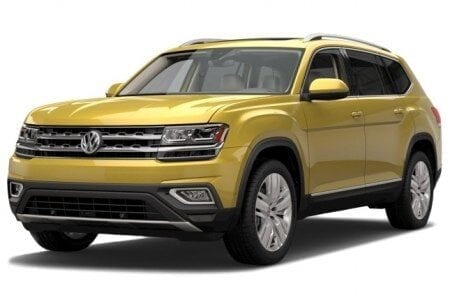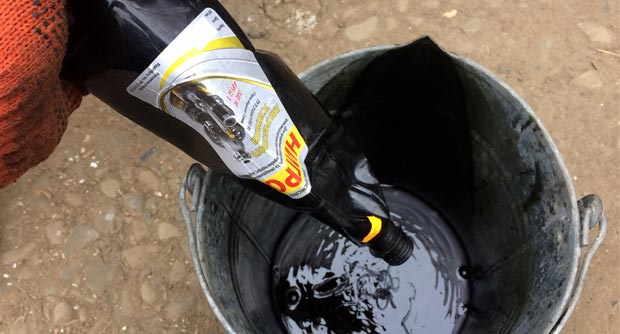
Nigrol. Father of modern gear oils
Content
Nigrol is the trade name for one of the brands of gear oils. It is a product of the distillation of certain types of oil, and is a viscous black liquid, from which it got its current name. Nigrol belongs to the group of mineral oils.
General characteristics and application
Traditional nigrol has been widely used in the past as a gear oil for lubricating mechanical gears of tracked and wheeled heavy equipment, as well as moving parts of steam equipment that is constantly exposed to steam and high temperatures. According to GOST 542-50 (finally abolished in 1975), nigrol was divided into “summer” and “winter” - the grades differed in viscosity parameters, for “summer” nigrol it was higher, reaching 35 mm2/with. Such a lubricant was poured into the axles of trucks and was widely used in gears: contact loads for vehicles of that time were relatively low.
The main operational value of nigrol lies in the high percentage of resinous substances in it that are present in certain grades of oil. This causes a sufficiently high lubricity of this substance.
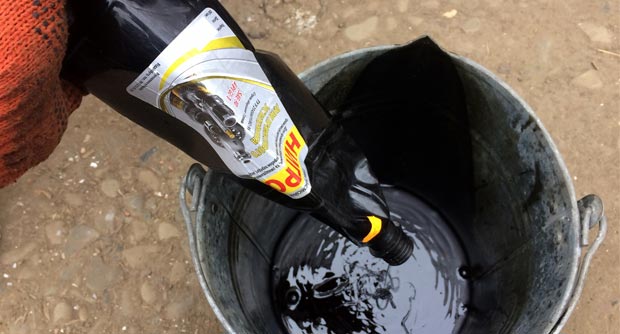

Modern nigrol: differences
The complication of the operating conditions of modern means of transport equipment led to a decrease in the efficiency of conventional nigrol, since it did not contain antiwear additives, and increased viscosity led to increased loads on transmission elements. Especially hypoid gears where friction losses are high. Therefore, now the concept of "nigrol" is exclusively branded, and this brand most often means transmission oils such as Tad-17 or Tep-15.
Features
Nigrol Tad-17 is a brand of automotive gear oil, the features of which are:
- Increased resistance to sliding friction in the case of significant differences in the speeds of the contacting elements of mechanical transmissions.
- The presence of additives that ensure the constant presence and renewal of the surface oil film.
- Smaller (in comparison with conventional nigrols) value of relative viscosity.
- Reduced dependence of viscosity on the temperature that occurs in the contact zone.
The additives contain sulfur, phosphorus (but not lead!), Anti-foam components. The number after the letter abbreviation indicates the viscosity of the lubricant, mm2/s, which the product has at 100ºC.
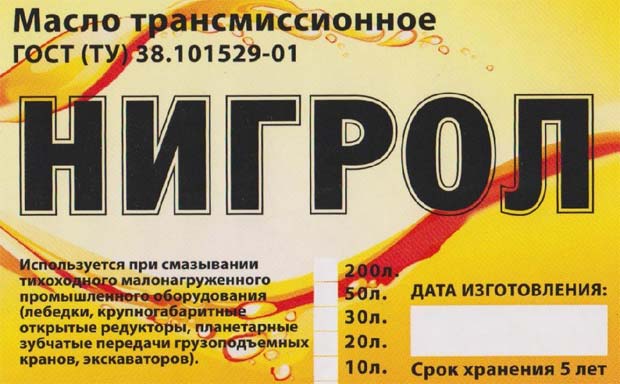

Lubricant performance is shown below:
- average viscosity, mm2/s, no more than - 18;
- operating temperature range, ºC - from -20 to +135;
- working capacity, thousand km - up to 75 ... 80;
- work intensity level - 5.
Under the tension level, GOST 17479.2-85 assumes a high extreme pressure ability, multifunctionality of use, the ability to operate at contact loads up to 3 GPa and local temperatures in the setting units up to 140 ... 150ºC.
Other parameters of Tad-17 are regulated by GOST 23652-79.
Lubricant brand Nigrol Tep-15 has a lower viscosity, so the efficiency of transmissions where this gear oil is used is even higher. In addition, the advantages of this lubricant are:
- High anti-corrosion performance.
- Viscosity stability over a wide temperature range.
- Improved quality of the initial distillate, which ensures a minimum of mechanical impurities present in the lubricant (no more than 0,03%).
- The neutrality of the pH index, which prevents the formation of foci of setting during transmission operation.
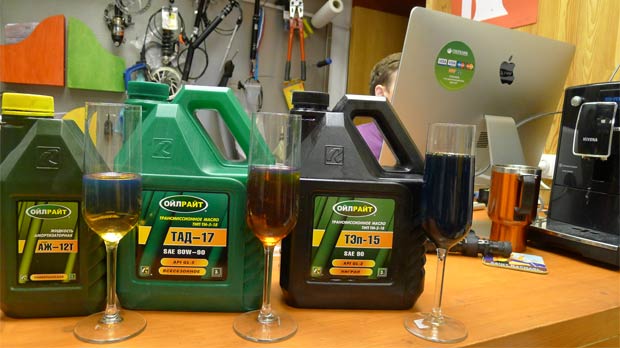

At the same time, the absolute indicators of the anti-wear ability of this gear oil are fully preserved only at relatively low temperatures. Therefore, the speed of movement of the lubricated parts should be low. This is observed mainly for tracked vehicles of general use (tractors, cranes, etc.).
Lubrication performance indicators:
- average viscosity, mm2/s, no more than - 15;
- operating temperature range, ºC - from -23 to +130;
- working capacity, thousand km - up to 20 ... 30;
- work intensity level - 3 (contact loads up to 2,5 GPa, local temperatures in the setting nodes up to 120 ... 140ºFROM).
Other parameters of Nigrol Tep-15 are regulated by GOST 23652-79.


Nigrol. Price per liter
The price of transmission oil of the Nigrol type is determined by a number of factors, including:
- The structure of a car gearbox.
- Temperature range of application.
- Time and volume of purchases.
- The presence and composition of additives.
- performance and replacement time.
The range of prices for nigrol is characteristic, depending on the packaging of the oil:
- in barrels of 190… 195 kg - 40 rubles / l;
- in canisters of 20 l - 65 rubles / l;
- in canisters of 1 liter - 90 rubles / liter.
Thus, the volume of purchase (and the price of the goods) is determined by the intensity of operation of your car, since changing the lubricant in the off-season is still inevitable.


Watch this video on YouTube
